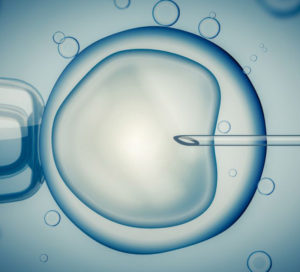
Did you know that one of the causes of infertility in men is at the genetic level?
Infertility affects ~ 10% –15% of reproductively active couples worldwide. In about half of them, the cause is male factor infertility. Genetic factors remain the most complex and least understood contributors to variations in fertility. Epigenetics, which constitutes another layer of gene regulation, strongly affects the expression and function of genes.
What is epigenetics?
By definition epigenetics studies hereditary changes caused by gene activation and  without any change in the body’s underlying DNA sequence. DNA methylation is of the best studied epigenetic modifications that affect gene expression and chromatin packaging during spermatogenesis.
without any change in the body’s underlying DNA sequence. DNA methylation is of the best studied epigenetic modifications that affect gene expression and chromatin packaging during spermatogenesis.

The DNA methylation refers to the addition of a methyl group (CH3) often to the fifth carbon atom of a cytosine ring. This conversion of cytosine bases to methylcytosine 5 is catalyzed by DNA methyltransferases (DNMT). Depending on the effect of methylation on cytosine it receives a name; hypomethylation if the gene increases its expression or hypermethylation if the gene reduces its expression.
In all publications on epigenetics and physiology, behavioral readings after Assisted Reproduction  effects have been observed. Most experiments address the effects of ovulation induction and pre-implantation embryo culture on maintaining impression until mid-gestation. The impression state is still used by the methylation state of the DMR, in which parental printed H19 is often studied. Printed gene expression has also been determined. Examples of unaffected or mildly affected methylation followed by affected expression are given. Therefore, full details of CpG methylation regulation of imprinted gene expression are not yet available, which is a gap in our understanding.
effects have been observed. Most experiments address the effects of ovulation induction and pre-implantation embryo culture on maintaining impression until mid-gestation. The impression state is still used by the methylation state of the DMR, in which parental printed H19 is often studied. Printed gene expression has also been determined. Examples of unaffected or mildly affected methylation followed by affected expression are given. Therefore, full details of CpG methylation regulation of imprinted gene expression are not yet available, which is a gap in our understanding.
Bibliography:
- Genome-wide differential methylation analyses identifies methylation signatures of male infertility Kummar Mohanty Sujit, Saumya Sarkar, Vertika Sigh, Rajesh Pande; Human Reproduction, Volume 33, Issue 12 December 2018, p 2256-2267
